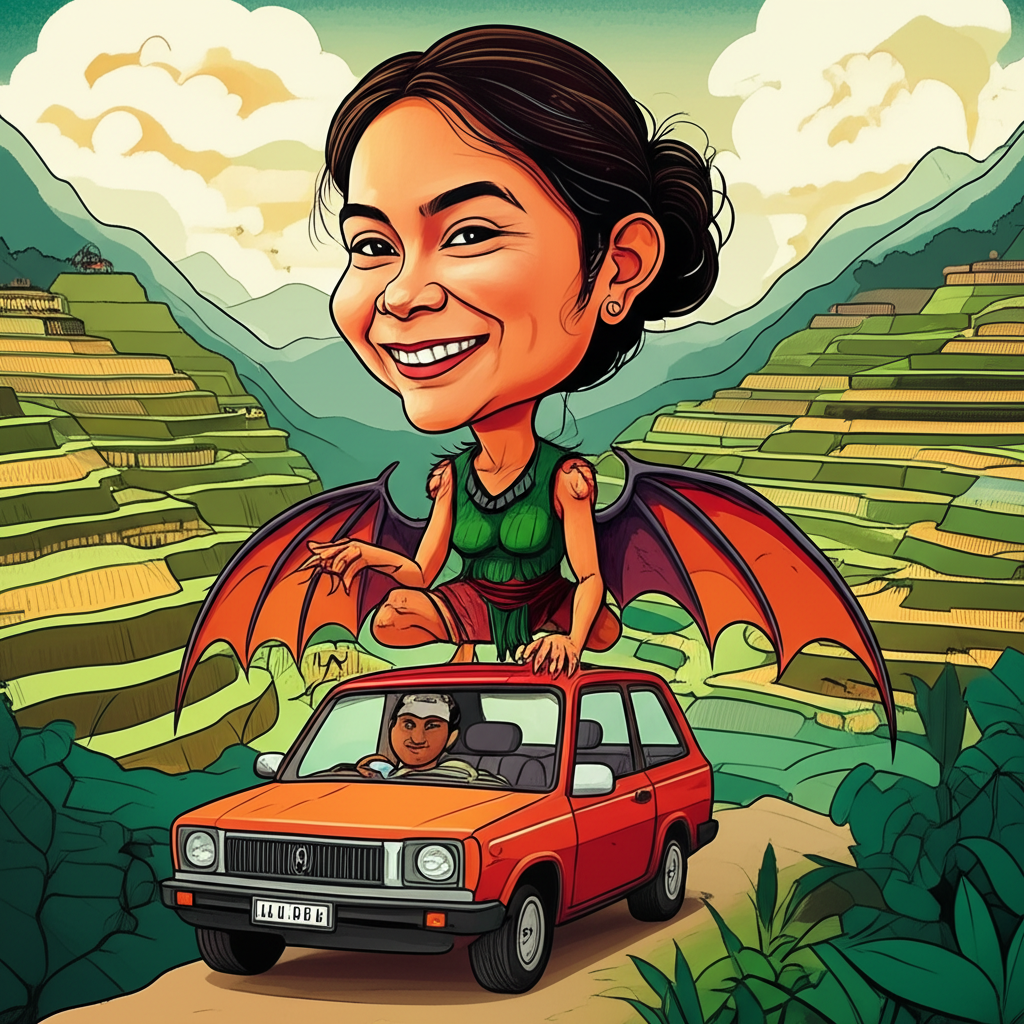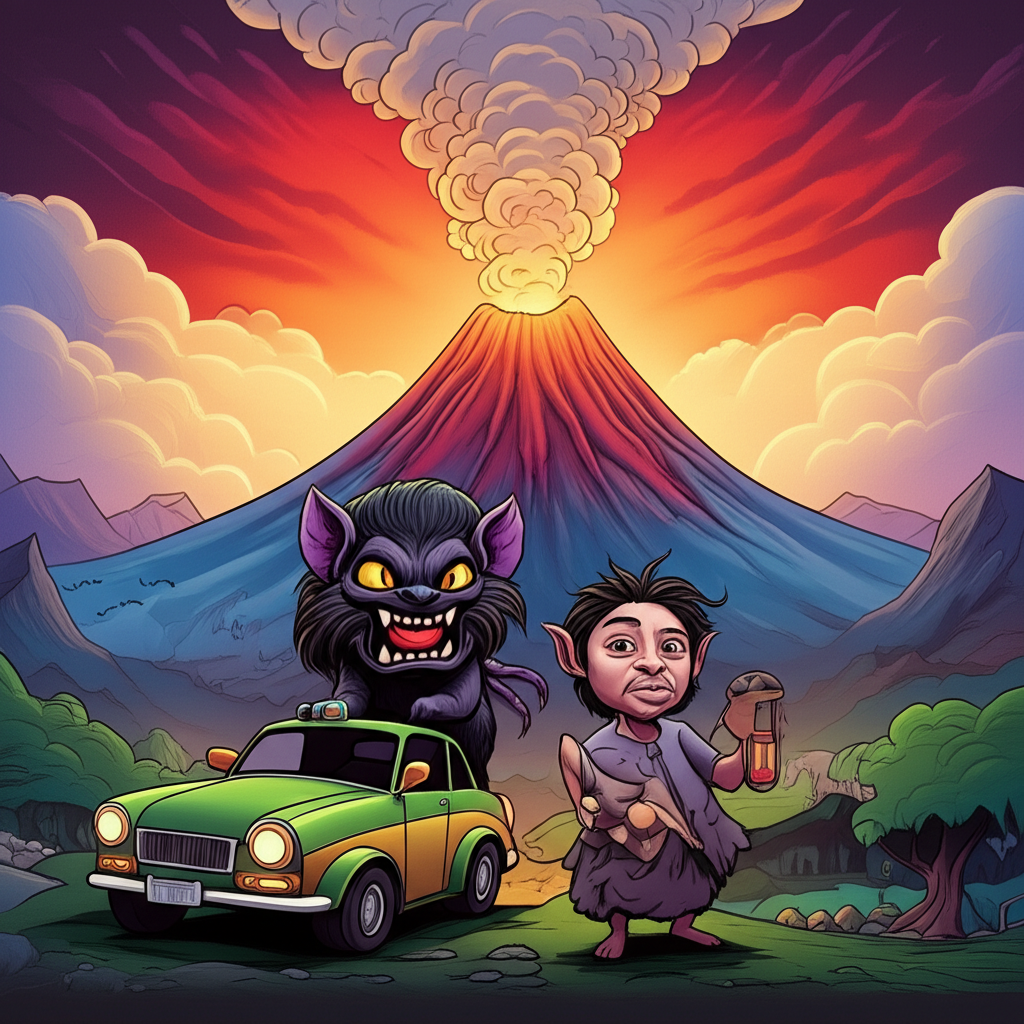
The Philippine archipelago, a tapestry woven with vibrant cultures and ancient traditions, is a land where the veil between the mundane and the mystical has often been perceived as thin. Among the myriad of tales whispered around hearth fires and passed down through generations, some resonate with a particular power, drawing their essence from the very landscape they inhabit. One such captivating narrative, steeped in the folklore of the Bicol region, speaks of the Tikbalang, a creature of myth, and its purported connection to the awe-inspiring presence of Mayon Volcano.
This is not a chronicle of divine intervention or a guide to spiritual practices. Rather, it is an exploration of the imaginative world of ancient Filipinos, a glimpse into the stories they told to understand their environment, their fears, and their deepest aspirations. These are echoes of Anitun Tabu, the traditional beliefs of a people who looked to the natural world for answers and to their stories for meaning.
The World of the Ancient Bicolanos: A Realm of Spirits and Shadows
The stories of the Tikbalang and their interactions with the land likely emerged from a cultural context deeply intertwined with nature. Imagine the Bicol region centuries ago, a land of verdant rainforests, fertile plains, and the ever-present, majestic silhouette of Mayon Volcano. Life for the ancient Bicolanos was a constant negotiation with the forces of nature. They were farmers who depended on the whims of the weather, fishermen who sailed treacherous seas, and communities who lived in the shadow of a volcano that, while beautiful, was also a potent symbol of raw, untamed power.
In this environment, it was natural for their worldview to be populated by spirits and beings that inhabited the forests, mountains, and rivers. The world was not merely a physical space but a realm alive with unseen forces, capable of both benevolence and malevolence. These ancient people sought to explain the inexplicable – the sudden storm, the lost traveler, the uncanny rustling in the undergrowth. Mythology provided a framework for understanding these phenomena, offering explanations and, in some cases, a means to appease or ward off these perceived entities.
The Tikbalang: A Figure of Mischief and Majesty
The Tikbalang, in these ancient narratives, is a creature often depicted as a tall, horse-like humanoid. Its head is said to resemble that of a horse, with large, piercing eyes that gleam in the darkness. Its body is often described as being covered in coarse, dark hair, and it possesses long, spindly limbs. The Tikbalang is not typically portrayed as a benevolent deity or a creature of pure evil, but rather as a being of capricious nature, prone to mischief and trickery.
Symbolically, the Tikbalang can be interpreted as representing the untamed aspects of nature. Its equine features might evoke the wildness and power of horses, creatures that were both revered and feared. Its presence in dense forests and shadowed paths suggests a connection to the unknown and the hidden dangers that lurked beyond the safety of human settlements. The Tikbalang’s legendary ability to lead travelers astray, to create illusions, and to make them lose their way, speaks to the primal human fear of disorientation and the vulnerability that comes with being lost in the wilderness. It embodies the unpredictable nature of the natural world, a force that could easily overwhelm the unobservant or the unwary.
The Whispers of the Horse-Man near Mayon
The legend often weaves the Tikbalang into the dramatic landscape surrounding Mayon Volcano. Tales would speak of the Tikbalang inhabiting the dense forests that carpet the volcano’s slopes, their eerie calls echoing through the valleys. It was said that the Tikbalang, in its playful yet perilous manner, would sometimes appear to travelers venturing too close to the volcano’s sacred grounds or its dense, mist-shrouded forests.
One common narrative recounts how a Tikbalang, perhaps drawn by the potent energy of Mayon or simply seeking amusement, would engage with humans. A traveler, lost or weary, might suddenly encounter a magnificent horse, seemingly out of place. This horse, however, would possess an unsettling intelligence in its eyes, a subtle awareness that hinted at something more. As the traveler approached, the Tikbalang would reveal its true form, standing tall and imposing.
The Tikbalang might then offer a ride, its voice a strange, disembodied whisper carried on the wind. If the traveler accepted, they would be taken on a wild, disorienting journey through the forests, often ending up far from their intended path, their memories of the ride fragmented and confusing. The Tikbalang’s purpose was not necessarily malicious in the sense of wanting to inflict harm, but rather to play with the human mind, to demonstrate its power over perception and direction. Other stories might tell of the Tikbalang mimicking voices, creating phantom sounds, or weaving illusions to confuse and frighten those who dared to trespass in its domain. The looming presence of Mayon, with its rumbling earth and fiery breath, provided a fitting backdrop for such tales, amplifying the sense of awe and mystery surrounding these mythical encounters.
Unraveling the Layers of Meaning
To the ancient Bicolanos, stories like these were not mere entertainment. They served a profound purpose in shaping their understanding of the world and their place within it. The Tikbalang, in its association with Mayon, could symbolize the awe-inspiring, yet potentially dangerous, power of the volcano itself. Mayon, a constant presence, could be seen as a living entity, its moods reflected in its fiery eruptions and its serene beauty. The Tikbalang, as its inhabitant, could represent the untamed spirit of this powerful natural force.
Furthermore, the Tikbalang’s trickery could serve as a cautionary tale. It reminded people to be respectful of the natural world, to be observant of their surroundings, and to avoid venturing into unknown or forbidden territories without due caution. The myth underscored the importance of wisdom and awareness when navigating the complexities of life, both in the physical and the perceived spiritual realms. It could also represent the inherent wildness that exists beyond human control, a reminder of our limitations and the vastness of forces that operate independently of human will.
Echoes in the Modern Consciousness
Today, the Tikbalang continues to capture the imagination. While no longer believed as literal beings, these figures from folklore have found new life in various forms of modern media. In literature, the Tikbalang appears as a fantastical creature in fantasy novels, often portrayed as a guardian of ancient forests or a formidable antagonist. Filipino filmmakers and game developers frequently draw inspiration from these myths, incorporating the Tikbalang into their creations, allowing new generations to engage with these traditional stories in innovative ways. These modern interpretations often explore the creature’s duality – its potential for both danger and a strange, wild beauty. Cultural studies scholars also examine these myths as valuable insights into the historical consciousness and cultural values of the Filipino people.
A Legacy of Storytelling
It is crucial to reiterate that these narratives, including the tales of the Tikbalang and its supposed connection to Mayon Volcano, are products of ancient imagination and tradition. They are cultural artifacts, stories that have been passed down through generations, offering a window into the beliefs and worldview of our ancestors. As Muslims, we understand that the true Creator and Sustainer of all existence is Allah (SWT). Our faith teaches us to acknowledge His supreme power and sovereignty.
However, the appreciation of these cultural stories does not contradict our faith. Instead, it enriches our understanding of human heritage and the enduring power of storytelling. These myths, in their vivid imagery and symbolic depth, remind us of the human need to make sense of the world, to express fears and wonder, and to connect with the landscapes that shape our lives. The echoes of Anitun Tabu, the whispered legends of the Tikbalang, and the silent majesty of Mayon Volcano, serve as a testament to the vibrant tapestry of human culture and the enduring power of the human imagination. They are a reminder of where we come from, the stories that have shaped us, and the rich heritage that continues to be woven into the fabric of our identity.





